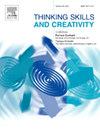在设计过程中加强人机协作:人工智能生成的内容如何提升学生的创造力
IF 4.5
2区 教育学
Q1 Social Sciences
引用次数: 0
摘要
在设计教育中,培养学生的创造力是至关重要的,因为它直接影响到他们设计成果的质量。随着人工智能的快速发展,探索人工智能生成内容(AIGC)在培养学生创造力方面的潜力变得至关重要。本研究通过实验考察了基于不同设计方法的设计过程,包括基于aigc的设计方法和传统的设计方法,对设计专业学生的内在动机和创造性成果的影响。利用混合方法的研究方法,这个实验涉及52名学生参与者,并检查了两种方法在不同阶段的设计学习。本研究表明,AIGC通过提高可用性、提高学生的内在动机和学习体验、提升创造力,显著提高了设计学习效果,同时指出了对人工智能的过度依赖和学习障碍等限制,这些限制必须得到解决,才能持续整合和长期有效。本研究为AIGC在设计学习中的应用提供了经验证据和理论指导,为未来跨学科学习环境下AIGC对创造力影响的研究提供了支持。本文章由计算机程序翻译,如有差异,请以英文原文为准。
Enhancing human computer collaboration in design process: How AI-generated content elevates students’ creativity
In design education, fostering students’ creativity is crucial because it directly impacts the quality of their design outcomes. As artificial intelligence develops rapidly, exploring the potential of artificial intelligence-generated content (AIGC) in fostering students’ creativity has become paramount. This study experimentally investigates the impact of design processes based on different design methods, including the AIGC-based method and the traditional design method, on the intrinsic motivation and creative outcomes of design students. Utilizing a mixed-methods research approach, this between-subjects experiment involved 52 student participants and examined the two methods across different stages of design learning. This study demonstrates that AIGC significantly enhances the design learning effect by improving usability, boosting students’ intrinsic motivation and learning experiences, and elevating creativity, while pointing out limitations like overdependence on AI and learning barriers that must be addressed for sustainable integration and long-term effectiveness. This study provides empirical evidence and theoretical guidance for the application of AIGC in design learning, offering support for future research on the impact of AIGC on creativity in interdisciplinary learning environments.
求助全文
通过发布文献求助,成功后即可免费获取论文全文。
去求助
来源期刊

Thinking Skills and Creativity
EDUCATION & EDUCATIONAL RESEARCH-
CiteScore
6.40
自引率
16.20%
发文量
172
审稿时长
76 days
期刊介绍:
Thinking Skills and Creativity is a new journal providing a peer-reviewed forum for communication and debate for the community of researchers interested in teaching for thinking and creativity. Papers may represent a variety of theoretical perspectives and methodological approaches and may relate to any age level in a diversity of settings: formal and informal, education and work-based.
 求助内容:
求助内容: 应助结果提醒方式:
应助结果提醒方式:


